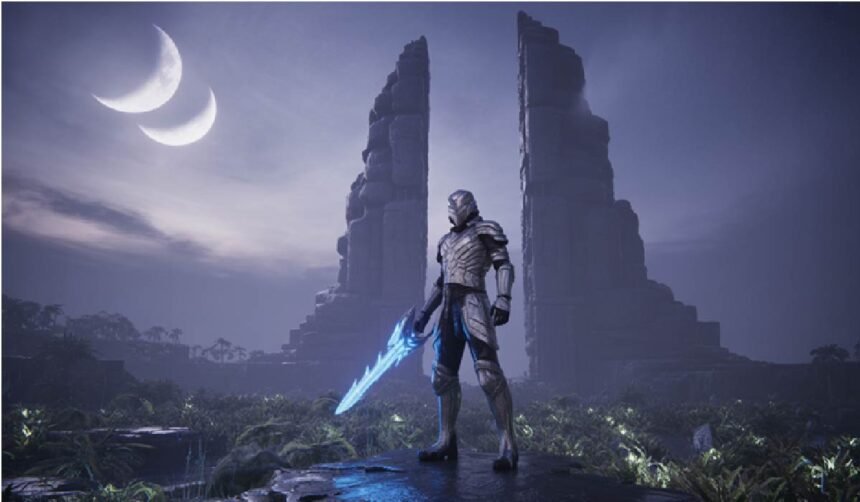A good game trailer does more than show gameplay. It builds tension, evokes emotion, and sparks curiosity within seconds. It creates a pulse. That pulse drives wishlists, shares, and preorders. The art lies in how it holds your attention long enough to make you care.
Let’s get into detail about how trailers turn simple visuals into powerful emotional triggers. Every frame, sound cue, and movement matters. The right sequence can lift a game from obscurity to anticipation overnight. Understanding this craft is how studios use cinematic storytelling, editing precision, and 3D animation services to make their trailers truly unforgettable.
What Makes a Trailer Stay in Memory
Every unforgettable trailer follows a rhythm: hook, reveal, and promise. It grabs attention, shows one striking moment, and ends with direction.
The hook must hit in the first five seconds. That’s where people decide to stay or scroll. It could be a sharp sound cue, a flash of movement, or a single close-up that defines tone. What matters is honesty and precision. When the hook connects to how the game feels to play, viewers trust it.
Then comes the reveal. This is the trailer’s heart. It should show one defining feature a mechanic, a boss, or a world rule that makes your game stand out. Don’t rush it. Let the moment breathe. That one shot, when edited right, becomes the part fans replay and share.
Finally, make the promise. A short line, a logo hit, and a call to act. Whether it’s wishlisting, subscribing, or preordering, make the action visible. Viewers don’t guess. You guide them.
Craft Is What Turns Interest Into Belief
Good trailers are built, not found. The pacing, sound, and timing decide how real the game feels. Sharp editing builds trust. Sloppy pacing breaks it. Editing controls what people believe. Fast cuts show confidence. Lingering shots suggest uncertainty. Each beat must serve rhythm, not filler.
Sound seals the moment. Clear audio hits matter as much as clear visuals. A weapon swing should sound heavy. Music should rise exactly when the emotion peaks. That sync creates satisfaction.
Players read honesty fast. When trailers show authentic gameplay, the trust gap closes. When they hide behind pure cinematics, doubt grows. Use both, but with intent. The cinematic sets tone. Gameplay proves truth.
When Animation Raises the Bar
Modern audiences expect cinematic polish. That’s where professional 3D animation services come in. These teams bring texture, motion, and lighting that elevate even small studios to AAA presentation.
A strong trailer mixes cinematic beauty with gameplay clarity. High-end animation creates the sense of scale and drama you can’t always capture in-engine. The right 3D sequence sells your world before a single line of dialogue.
Small teams often rely on 3D animation services to handle the complex shots, character close-ups, environmental transitions, or logo reveals. Outsourcing these parts saves time and lets developers focus on gameplay content. The result is balance: art that looks big without the cost of a full studio pipeline.
Professional animators also understand visual rhythm. They design motion that guides the eye. That rhythm makes viewers feel pulled forward frame by frame, beat by beat, until the title reveal lands.
What Players Actually Want to See
Players watch trailers for proof, not hype. They look for four things:
- Tone match – The trailer’s energy must reflect how the game feels to play.
- Mechanic proof – Real gameplay footage builds trust.
- Emotional anchor – A single line or shot that becomes the identity of the game.
- Clear call to action – One specific step after watching.
A Google study found that over 70% of gamers watch trailers before buying or wishlisting a game. That shows how much weight trailers carry. You don’t need to overwhelm viewers. You need to convince them in seconds.
Why Timing Shapes Impact
Length matters. Viewers lose focus fast. Data shows engagement drops sharply after two minutes. The sweet spot for a main trailer is around ninety seconds. Shorter cuts of 15 or 30 seconds are perfect for social platforms. These bite-sized edits act as hooks leading back to the full trailer. They multiply reach without redoing creative work.
Long trailers work only when they serve depth, like gameplay reveals or story overviews. Those should live on channels where viewers expect longer attention spans, such as YouTube or Steam pages.
Distribution Decides Success
A trailer can be brilliant and still fail if no one sees it. Distribution multiplies creative work. The key is to match format to platform.
- Use horizontal cuts for YouTube and official announcements.
- Use vertical edits for TikTok, Instagram, and Reels.
- Use looped clips for teasers or countdowns.
Every cut should carry the same DNA, the same hook, beat, and promise but shaped for where it plays. That repetition builds recognition, which drives conversion.
Big releases like Call of Duty or Cyberpunk 2077 prove the power of planned distribution. Their trailers go live in waves, across time zones, on every platform. The same principle works for smaller teams on a tighter scale. Timing, not budget, builds reach.
Turning Trailers Into Conversions
Great trailers don’t just entertain; they sell. That’s why many studios use game trailer services to manage concept, edit, and release.
These teams focus on performance. They design trailers that hit measurable goals: higher view-through rates, increased wishlists, or stronger click-throughs. Each cut serves a purpose: awareness, engagement, or conversion.
Professional game trailer services often handle scripting, pacing, and motion graphics together, making the story consistent from start to finish. Their value lies in how they think: every second must justify its place. That discipline drives sales, not views.
Using Research Data to Guide Creativity
Data doesn’t kill art. It refines it. Analytics show exactly when viewers stop watching. That tells you which beats lose interest. Adjust pacing there. A/B test versions of openings or music cues. Track click-through and completion rates. These small tweaks can double performance without changing your message.
How Trailers Fit the Bigger Marketing Picture
Trailers anchor every campaign. They lead press coverage, spark social chatter, and feed storefront visibility. Send short trailer clips to influencers with context on what to highlight. Use the main trailer to secure press mentions or store features. A strong trailer doesn’t just attract players; it gives others something to share.
When your trailer drives measurable wishlists or preorders, platforms notice. That visibility creates a loop of more exposure, more sales, more reach.
Small Teams, Big Presence
Expert animated studios can achieve impact without AAA budgets. Focus on clarity and polish. Highlight one mechanic or one world feature. Invest in professional help only where it matters. Outsourcing short cinematic shots or transitions to 3D animation services gives your trailer the same polish that big studios achieve. It’s about smart allocation, not scale.
Clean gameplay, crisp sound, and honest storytelling will always outperform overproduced confusion.
Measuring the End Results
Vanity metrics don’t pay bills. Track the right numbers: view-through rate, click-through rate, wishlist lift, and conversions. A million views mean nothing if no one clicks. But if ten thousand viewers watch to the end and a thousand wishlist the game, that’s real success.
Look for drop-off points. If people leave early, rework that section. Small improvements there raise total conversions more than chasing views.
Final Thought
A trailer is a promise. It says, “This is what you’ll feel when you play.” That promise must hold up. Show proof, not polish. Lead with honesty, not hype. Use smart partnerships, expert 3D animation services for visual depth, or game trailer services for strategic execution to hit that level of credibility.
When story, pacing, and craft align, you get more than attention. You build anticipation. And anticipation is what drives every great game launch.









